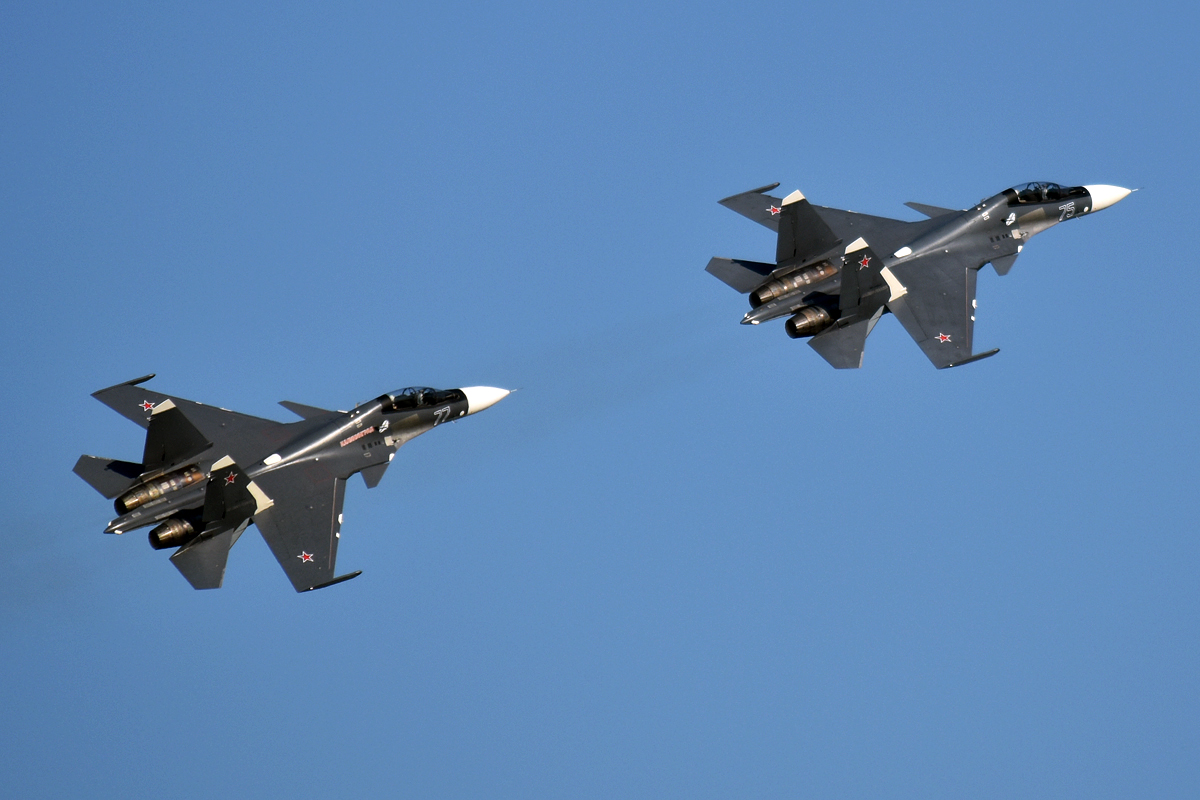Only four of Russia’s radar planes still fly. One’s hiding in the Arctic

According to aviation expert Tom Cooper, the Russian air force began Russia’s wider war on Ukraine in February 2022 with potentially just seven active Beriev A-50Us—four-engine Ilyushin Il-76 airlifters with radar radomes on their fuselages and stations for up to 15 crew and battle-managers.
In the aftermath of the 1 June Operation Spider Web—coordinated strikes on five Russian air force bases by short-range attack drones that the Ukrainian state security service, or SBU, smuggled near the bases in hijacked long-haul trucks—the Russians may be down to just four flyable A-50Us. Five if they managed to repair one of the radar planes the Ukrainians damaged in a February 2023 drone attack.
The analysts at AviVector, which scrutinizes satellite imagery of Russian air bases, may have spotted one of them. But this A-50U isn’t anywhere near Ukraine. Instead, it’s staging from Vorkuta air base in northern Russia, 2,400 km from Ukraine.
“The A-50U airborne early warning aircraft arrived in June and is likely conducting missions over northern Russia, escorted by MiG-31BM interceptors,” AviVector reported.
— AviVector (@avivector) August 3, 2025
Satellite images of
Vorkuta Airfield as of August 2, 06:58 UTC
The airbase housed 1 A-50U (Mainstay), 1 Tu-134UBL (Crusty), and 3 MiG-31 (Foxhound).
The A-50U airborne early warning aircraft arrived in June and is likely conducting missions over northern Russia, escorted… pic.twitter.com/z1p6vwVZrR
Precious planes
The A-50U, like the US Air Force’s Boeing E-3, flies behind the front line in order to scan the horizon for enemy aircraft and missiles. Soaring high above the ground cover and capable of repositioning as needed, the A-50Us have helped Russian commanders to keep an eye on the Ukrainian air force—and to detect, minutes in advance, incoming Ukrainian missiles and drones.
If there are four operational A-50Us and one is in northern Russia, it’s possible no more than two are within reach of Ukraine—and useful for Russia’s defensive effort against Ukrainian deep strikes. Analysts have long assumed at least one of the radar planes is in the Russian Far East for patrols along Russia’s eastern waters and its border with China.
Two A-50Us aren’t terribly useful, given that it takes at least three of the lumbering planes to maintain anything approaching around-the-clock coverage of a given area for even a limited span of time.
Early in Russia’s 42-month wider war on Ukraine, the A-50Us “flew an average of two–three sorties per day, providing higher-resolution early-warning and vector information” in southern and eastern Ukraine, Justin Bronk, Jack Watling and Nick Reynolds wrote in a November 2022 report for the Royal United Services Institute in London.
That was possible because the Russian air force had nine A-50Us prior the wider Russian invasion of Ukraine in February 2022. Now it has many fewer. The radar coverage Russian forces enjoyed in 2022 is no longer possible.

Did Ukraine just unleash its first Bars cruise missiles? A 500 km strike deep inside Russia suggests it
A Ukrainian drone damaged an A-50U on the ground in Belarus in February 2023. In January 2024, a long-range Ukrainian missile—reportedly a US-made Patriot—shot down an A-50U over the Sea of Azov in southern Ukraine. Six weeks later in February 2024, another Ukrainian missile, an ex-Soviet S-200, struck a third A-50U in the same area.
The Russian air force swiftly grounded its surviving A-50Us and scrambled to replace the two or three lost planes. That meant cycling at least one older and possibly unflyable A-50U—out of several dozen Beriev built in the 1980s—through Beriev’s Aviation Scientific and Technical Complex in the city of Taganrog, on the Azov Sea coast just 130 km from the front line.
So of course the Ukrainians promptly droned the Taganrog factory the following month.
The Kremlin reportedly canceled the effort to replace the A-50U with newer A-100 radar planes back in June. The upshot is that, by this spring, the Russian air force may have been down to five or fewer active A-50s—with no clear plan for complementing or replacing them.
And then, on 1 June, the SBU smuggled more than 100 short-range attack drones into Russia in modified truck trailers. The drones targeted Dyagilevo, Ivanovo, Olenya, Belaya and Ukrainka air bases. Ivanovo, 750 km from Ukraine, is the home base for the entire A-50U fleet, including active and derelict airframes.
Post-raid satellite imagery of Ivanovo depicted at least one suspicious pile of wreckage as well as a possibly scorched A-50. The imagery may point to one or more destroyed or damaged A-50U, but AviVector for one concluded the affected airframes were already derelict. At best, they were useful as sources of spare parts for the active A-50Us.
In any event, the A-50U fleet is still in very bad shape. Its few surviving jets are apparently scattered far and wide from northern Russia to the Russian Far East, leaving at most three—and potentially just two—for flights supporting the war in Ukraine.
For the Ukrainians, that’s an opportunity: to exploit gaps in Russian air-defenses … and launch more missiles and drones at targets inside Russia.
